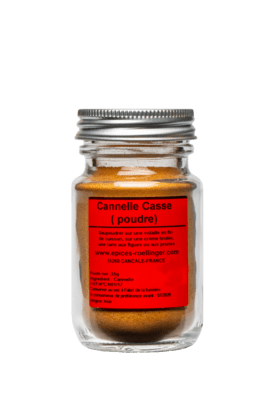Cinnamon Cassia India

Recommendations
-
Allergens
Absent, except for cross-contamination.
May contain traces of sesame, celery, mustard, soy. - Origin India
- Storage / Use In a cool, dark, dry place.
Olivier Rœllinger's words
The taste of Cassia is more marked, more liquroice-like, with woody, peppery sweet and spicy notes. Chewing on a piece of the bark is a real treat for the tastebuds.
Cassia is not only an ingredient in many of my spice blends, but it is particularly good on poultry at the end of the cooking process. The best, however, is to sprinkle it on a crème brûlée, or a fig or prune tart.
Story
True cinnamon comes from the bark of the young shoots of Cinnamomum zeylanicum, a large tree of the Lauraceae family. It should not be confused with cassia or Chinese cinnamon (Cinnamomum cassia), which is less subtle. They can be told apart by the thickness and color of the bark. Cinnamon is thinner and is a warm yellow-brown, while cassia is thicker and reddish-brown.